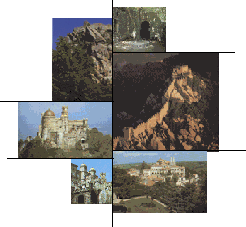|
|
Country-Town and Jurisdiction,
Sintra is placed 207m high, placed in a unique way on the surrounding landscape. Classified by UNESCO as Patrimony of
Humanity, the entire Village is bestrewn with a variety of monuments that raise
its statute of cultural landscape. Has a
proof of its remote roots is the Moorish Castle from the eighth century. During nineteen
century, Sintra is inhabited by the nobility and the bourgeoisie, artists,
poets and writers that consider it as an inspiration source for their
romantic works. Some palaces, pavilions, fountains and belvederes are built.
Pena Palace and Park are real witness of all the cultural fervour that
flooded Sintra during the Romantic period. The
cultural development of the nineteen-century distinguished Sintra in a such
way that till today during Summer, the Village is flooded by a form of
cultural melancholy, that conducted to the rearing of the Sintra Music
Festival that takes place from middle June to the end of July. July is also
considered the month of the Moon Mountain Festival (ancient name of Sintra)
with a miscellaneous cultural animation programme. In August
the Ballet Evenings are famous having as scenery different Sintra farms. As interesting points to visit are also the Village National Palace, ex-libris of Sintra, the Monserrate Farm, the Penha-Verde Farm, the Seteais Palace and the new born Museums of Toys and Contemporary Art.
|
|
|
|
||
|
|
||
|
|



